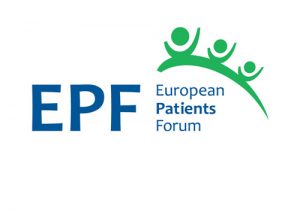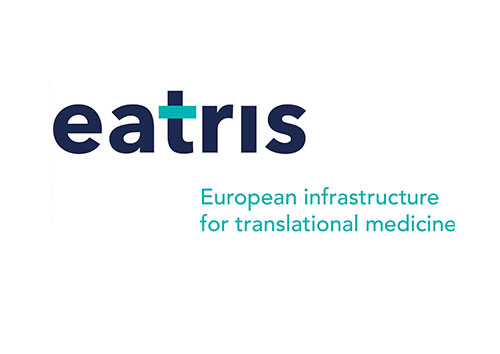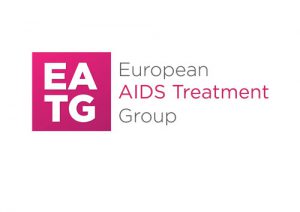
Patients should be
involved in your
research
We are here to help you get started.
Patient Engagement Resource Centre
for Translational Researchers
Our Resource Centre is an easy to navigate platform to help you get started with patient engagement in research.
We selected relevant public resources to help you understand the basics of patient engagement,
and guide you through the different phases of patient engagement:
from planning to conducting and evaluating.
This website offers practical guidance about how to involve patients and the public in laboratory based research, with specific sections dedicated to the added value of patient and public involvement (PPI) and considerations for the different stages of the activity. (Source: Parkinson’s UK, Alzheimer’s society and NIHR)
View this resourceFrom the guide above, this resource provides examples from lab-based researchers explaining how public and patient involvement (PPI) might benefit lab-based research. (Source: Parkinson’s UK, Alzheimer’s Society and NIHR)
View this resourceThis introductory guide to engaging & involving the public in research, provides guidance on research engagement and addresses the why, the how and the process. (Source: UCD Dublin)
View this resourceThe roadmap highlights specific opportunities for patient involvement along the four key stages of the medicines Research and Development lifecycle, illustrated with concrete examples. (Source: EUPATI)
View this resourceThis guidance for researchers provides an overview and case studies of public and patient involvement in basic and clinical research. (Source: Parkinson’s UK)
View this resourceBuilding on the “Engage Your Research guide” (above) , this website offers resources, including tools and videos, explaining the basics of public and patient involvement (PPI). (Source: UCD Dublin)
View this resourceThe Code of Conduct describes the essentials for meaningful collaboration of all stakeholders involved in patient engagement activities within medicines development. (Source : PARADIGM Project)
View this resourceThis tool is addressed to organisations, providing recommendations on the competencies (knowledge, skills and behaviours) and resources that each stakeholder organisation should aspire to have in place in order to plan, implement and evaluate meaningful and sustainable patient engagement (PE) activities across the medicines lifecycle. (Source: PARADIGM Project)
View this resourceThe guide provides an overview of the value of patient engagement and key elements to consider when engaging patients in basic, pre-clinical and translational research projects. (Source: European Joint Programme Rare Diseases)
View this resourceEUPATI Learning Lab is a training portfolio for academia and industry members looking to upskill in the area of patient engagement. (Source: EUPATI)
View this resourceThe free-online course is made of four modules, aiming at helping patient partners, researchers, trainees and other members of research teams, to do patient engagement in research. (Source: Canadian Institutes of Health Research)
View this resourceCreated together in a multi-stakeholder group and with digital stakeholders, the PFMD PE Digital Roadmap aims to clarify the role of the patient community in designing and developing digital health solutions by establishing a step-by-step framework that showcases ‘how to implement’ and ‘the value of’ good patient engagement. (Source: PFMD)
View this resourceThis section of the website “A practical guide to patient and public involvement in lab-based research” offers a series of reflective questions to consider during the planning period. (Source: Parkinson’s UK, Alzheimer’s Society and NIHR)
View this resourceThis document addresses the considerations for identifying appropriate participants when planning a patient engagement activity, and the associated skills to help match the right person to the right activity. (Source: PARADIGM Project)
View this resourceThis section of the PPI Ignite network offers a set of questions for researchers to consider when preparing and planning engagement with potential public and patient involvement partners. (Source: University College Dublin)
View this resourceThe video of JLA priority setting partnerships, explains the methodology for identifying and prioritising unanswered questions or evidence uncertainties that are agreed as the most important in order to inform health research funders on the issues that matter most to the people who need to use the research in their everyday lives. (Source: JLA)
View this resourceThe James Lind Alliance Guidebook is a step-by-step guide to establishing and managing a Priority Setting Partnership (PSP) and the principles behind it. In the “Practical Tools” section you will find templates and documents that complement this guidebook. (Source: JLA)
View this resourceThis page links to guides and practical advice on payment and non-monetary methods for recognising the time, skills and expertise provided by members of the public. Although this tool is specific to the UK, its guiding principles can be applied elsewhere. (Source: NIHR- INVOLVE)
View this resourceThis is a guide for patients, carers and members of the public thinking about getting actively involved in research and being offered expenses and/ or payment for their involvement. Although this tool is specific to the UK, its guiding principles can be applied elsewhere. (Source: NIHR)
View this resourceThis guide is addressed to researchers who need to cost PI activities at any stage of the research process, this includes anyone in a professional role involved in costing PI. Although this tool is specific to the UK , its guiding principles can be applied elsewhere. (Source: NIHR)
View this resourceThis is the Policy on reimbursement and compensation for patients and members of the public involved in the Swiss clinical trial organisation network. Although it is specific to Switzerland, its guiding principles can be applied elsewhere. (Source: Swiss Clinical Trial Organisation)
View this resourceThis Guidance is aimed at organisations that pay public contributors as part of their involvement of members of the public in research, as well as for researchers and research staff. Although this tool is specific to the UK , its guiding principles can be applied elsewhere. (Source: NIHR)
View this resourceThis Guide is intended for research teams to prepare and implement patient involvement during the grant application and the project implementation phases. (Source: Rising Tide Foundation- Patvocates)
View this resourceThis toolkit provides resources to support researchers to better understand how to embed equality, diversity and inclusion in the research design. Although this tool is specific to the UK, its guiding principles can be applied elsewhere. (Source: NIHR)
View this resourceThis is a practical guide containing seven quality measures to assess projects involving patients, to be used during the planning, development and evaluation phases. In the “Practical Tools” section you will find the related tool for project planning (Source: Patient Focused Medicine Development)
View this resourceBuilding from the Patient Engagement Quality Guidance, this is a step-by-step guide to support research teams, patient communities, and other stakeholders to do patient engagement in the early research stage. (Source: Patient Focused Medicine Development)
View this resourceBuilding from the Patient Engagement Quality Guidance, this tool provides step by step recommendations on patient engagement in the design of clinical trial protocols, for anyone who needs to be involved in their implementation. (Source: Patient Focused Medicine Development)
View this resourceThise set of material, including guidance, educational scenarios and tools, explores how to support patients to make informed decisions before the engagement and help engaging stakeholders understand the consequences that the act of engagement might have on patients during multi-stakeholder interactions in medicines development. (Source: PARADIGM Project)
View this resourceThis set of documents, including useful information and mandatory items for the planning and establishment of a Priority Setting Partnership (PSP) complements the James Lind Alliance Guidebook. (Source: JLA)
View this resourceThis planning tool ,designed to help consider theoretical challenges for implementing public and patient involvement (PPI), is aimed to assist researchers and PPI contributors to make a strategic, considered plan for involvement throughout all stages of research and can be used iteratively as the research progresses. (Source: University College Dublin)
View this resourceBuilding on the Patient Engagement Quality Guidance, this planning tool can help identify and set patient engagement goals to reach when starting a new project. (Source: Patient Focused Medicine Development)
View this resourceThis checklist, including actions and responsibilities related to general planning, respect, accessibility, representativeness, transparency aims to help organisers in the planning of patient engagement activities. (Source: PARADIGM Project)
View this resourceThis checklist, to be used during pre-engagement planning of patient engagement activities, is a practical tool designed to help individuals responsible for coordinating and planning patient engagement activities consider specific patient needs for travel, meeting venues, accommodation and associated elements. (Source: PARADIGM Project)
View this resourceThe PPI Cost Calculator is a practical tool to help planning the public and patient involvement budget. (Source: University College Dublin)
View this resourceThis tool helps plan the public and patient involvement budget, and provides practical advice on how to budget for involving patients, carers and the public in research at any stage of the research process. Although this tool is specific for the UK, its guiding principles can be used elsewhere. (Source: NIHR-INVOLVE)
View this resourceThis section of the Research Impact toolkit provides a canvas for planning impact, breaking impact down into its component parts and helping planning, from identifying collaborators to writing impact sections in funding proposals.(Source: University College Dublin)
View this resourceThe EUPATIConnect is a place where both EUPATI Patient Experts (+200 patients who went through a training programme on research and development) and researchers can connect, to create mutually beneficial opportunities and to enhance the future of patient engagement. (Source: EUPATI)
View this resourceEUPATI Library compiles recent scientific publications reflecting on patient engagement in medicines R&D, medical devices, digital health, real-world evidence and other aspects of health innovation. The Library is especially suitable for an advanced user who is aiming for a deep dive on a specific topic.
View this resourceThis Position paper ARTIFICIAL INTELLIGENCE IN HEALTHCARE: Advancing Patient-Centric Care through Co-design and Responsible Implementation explores the applications, benefits, and challenges associated with Artificial Intelligence (AI) in healthcare from a patient perspective, and provides key recommendations for a responsible deployment of AI solutions. (Source: EPF)
View this resourceThis paper describes the FUTURE-AI framework, which provides guidance for the development and deployment of trustworthy AI tools in healthcare. To operationalise trustworthy AI in healthcare, a set of 30 best practices were defined, addressing technical, clinical, socioethical, and legal dimensions. This includes a recommendation for AI developers to include patients in developing new AI […]
View this resourceHow can patients shape digital medicine? A rapid review of patient and public involvement and engagement in the development of digital health technologies for neurological conditions. As digital health research gains increasing momentum in the neurological space, it is essential to understand how PPIE is being conducted and identify key learnings to optimally involve contributors […]
View this resourceThis link describes some common methods to consider when partnering with public and patient involvement contributors. (Source: University College Dublin)
View this resourceThis section of the Practical Guide to Patient and Public Involvement in lab-based research, provides advice about what to do during the public and patient involvement activity. (Source: Parkinson’s UK, Alzheimer’s Society and NIHR)
View this resourceThis online decision support tool is intended to enable researchers, policy-makers and others wanting to conduct inclusive research, to find the method best suited for their specific project needs, covering a wide variety of engagement and involvement methods suited to local, national and transnational research projects. (Source: Engage 2020 Project)
View this resourceThis guidance, together with the checklist and template that complement it, can be used by organisations for a more effective and timely planning, reporting and disseminating of information of their patient engagement activities. (Source: PARADIGM Project)
View this resourceThis tool is a guidance for reporting patient and public involvement in health and social care research, aiming to improve the quality, transparency, and consistency of the international patient and public involvement. (Source: Equator Network)
View this resourceThis toolkit provides resources and tools to help capture, communicate and monitor the research impact. (Source: University College Dublin)
View this resourceThis tool provides guidance on the evaluation process of Public and Patient Involvement, considering what has to be evaluated, the key principles and a practical Assessment tool. (Source: University College Dublin)
View this resourceDeveloped by a team of researchers and public contributors at People in Health West of England, the log is a set of questions for researchers and public contributors about the PPI activities that took place. This gives them an opportunity to reflect and report on the learnings and outcomes from these activities. (Source: NIHR)
View this resourceThis tool helps to assess the level and quality of patient engagement in an ongoing or completed project and to identify areas for improvement in future projects. (Source: Patient Focused Medicine Development)
View this resourceThis tool provides a map for monitoring and evaluation of patient engagement across multiple decision-points in medicines R&D, including 87 metrics organized across four key evaluation components: Input metrics , Activities/process, Learning & Change metrics and Impact metrics. (Source: PARADIGM Project)
View this resourceThis evaluation framework is a digital tool to support public and patient involvement and provides a visual feedback of how public contributors feel about being involved in a research project (Source: NIHR, UWE Bristol, PHWE, This Equals)
View this resourceStories
Hear from academic researchers, patients and carers how they concretely worked together
and their tips for successful patient-researcher engagement.
Would you like to share your story with us? Please contact us via the Get In Touch page.
Story of Valentina and Claas
During the science4all project, funded by the Ludwig Boltzmann Society, Valentina and Claas worked on patient involvement in basic science in the field of lung fibrosis. To achieve this goal they developed a workshop series with basic scientists and patients/ caregivers in Austria. The goal was to improve the bilateral understanding and to educate the patients and caregivers in order to allow a fruitful discussion on innovative, fundamental research on lung fibrosis.
Story of Stan and Larissa
Prof. Dr. Stan van de Graaf (Amsterdam UMC) and Dr Larissa de Lannoy (patient advocate) give their insight into patient engagement regarding Primary Sclerosing Cholangitis (PSC), a rare progressive liver disease associated with fatigue and itch.
Story of Barbara and Oriana
Oriana and Dr Barbara Rivera share their journeys and their current collaboration in research for Rare Ovarian tumors, such as small Cell Ovarian Cancer, a highly lethal rare cancer threatening young women’s lives. Patients’ collaboration was fundamental in disclosing unmet needs, bridging the breach between researchers and patients in their understanding of the disease process and in triggering research breakthroughs.


